The Phenomenal Roman Bridges: Connecting Past with Present
How do some Roman bridges still stand today? What was it that made Roman engineering so unique?
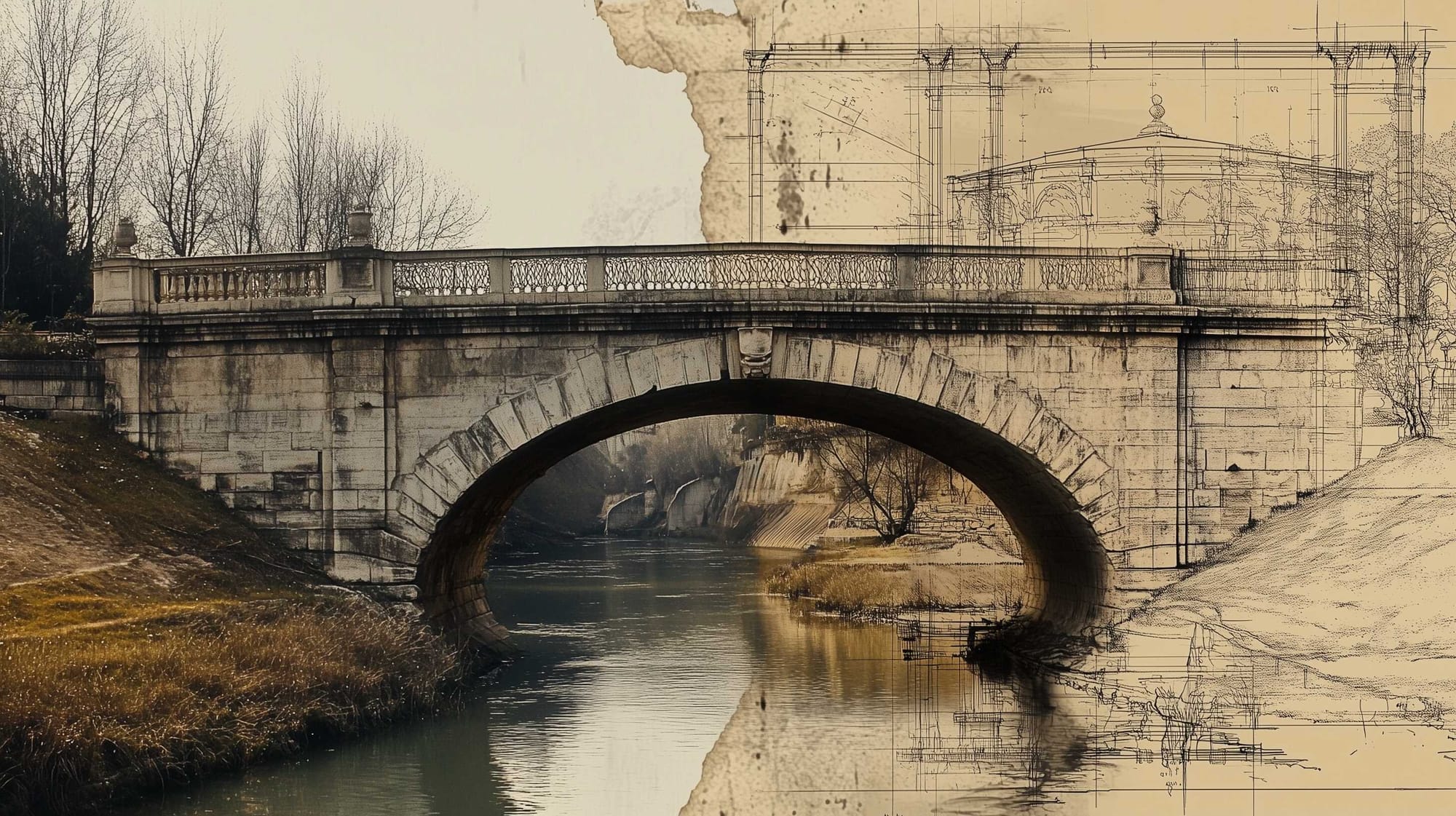
Roman bridges are enduring symbols of ancient engineering excellence. Built over 2,000 years ago, many of these structures are still in use today, demonstrating the advanced techniques that contributed to their longevity. Through their mastery of materials like stone and concrete, along with innovative arch designs, Roman engineers created infrastructure that has survived the test of time.
The Foundations of Roman Bridge Construction: Innovations and Techniques
The Romans initiated organized bridge construction to support their military campaigns. Specialized engineers and craftsmen formed guilds that were sent across the empire, facilitating the exchange of construction techniques and ideas.
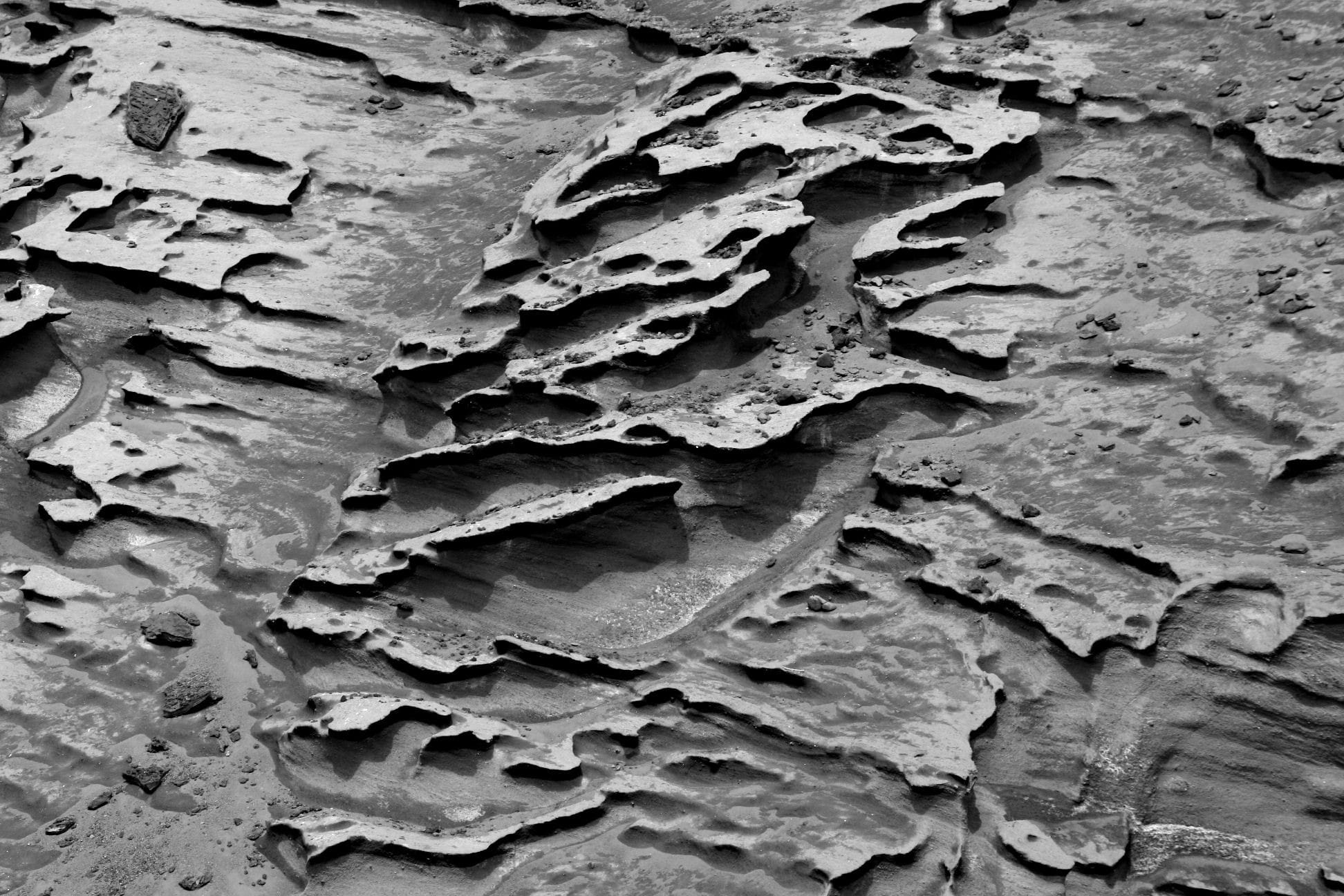
A key discovery that aided their efforts was pozzolana, a natural cement they used for building piers in rivers.
Pozzolana Linosa, in B&W. Credits: lula1977, CC BY-NC-ND 2.0
Roman bridges are renowned for employing the circular arch, which allowed for longer spans than stone beams and created more durable structures compared to wooden bridges. For longer bridges that required multiple arches, solid piers were essential, but building them on soft riverbeds posed challenges.
To address this, the Romans developed the cofferdam, a temporary enclosure made from wooden piles driven into the riverbed and sealed with clay. Concrete was then poured inside the enclosure to form the pier foundation. While most surviving Roman bridges were built on rock, an example of cofferdam use is the Sant’Angelo Bridge in Rome, which has stood on its foundations in the Tiber River for over 1,800 years.
Understanding Roman Engineering: Lost Blueprints and Ancient Techniques
The accomplishments of Roman engineers in addressing infrastructure challenges are remarkable, though many blueprints, construction details, and important written records have not survived. While ancient authors like Vitruvius and Frontinus provide some technical insights, fully understanding Roman building methods requires adopting the viewpoint of the ancient engineer.
Recent studies have shed light on aqueduct construction and the use of tools like the Chorobates and Groma for precise measurements.
Additionally, technological advances have been revealed, such as the discovery of a tombstone relief in Hierapolis (Pamukkale, Turkey), showing that by the third century CE, a gearbox capable of converting circular to horizontal motion had been developed. This mechanism was preserved on the gravestone of Ammianus, an otherwise unknown figure, and it was used to power a water-driven double masonry sawmill.
The study of Roman bridge construction was once closely tied to the analysis of Roman roads but has recently shifted focus toward water-related infrastructure, such as hydraulic engineering. However, a complete understanding of Roman civil engineering requires integrating both approaches, as bridges often served dual purposes for roads and aqueducts.
One challenge in understanding Roman engineering lies in the scarcity of surviving documentation, rather than a lack of modern knowledge. Simply applying modern analytical methods doesn’t always compensate for gaps in historical evidence.
Moreover, surviving Roman structures may not represent typical construction. Some have endured due to exceptional materials, strategic maintenance, or simply because they were rarely used. Consequently, Roman bridges that remain today might not be entirely original due to extensive repairs or reconstructions over the centuries.
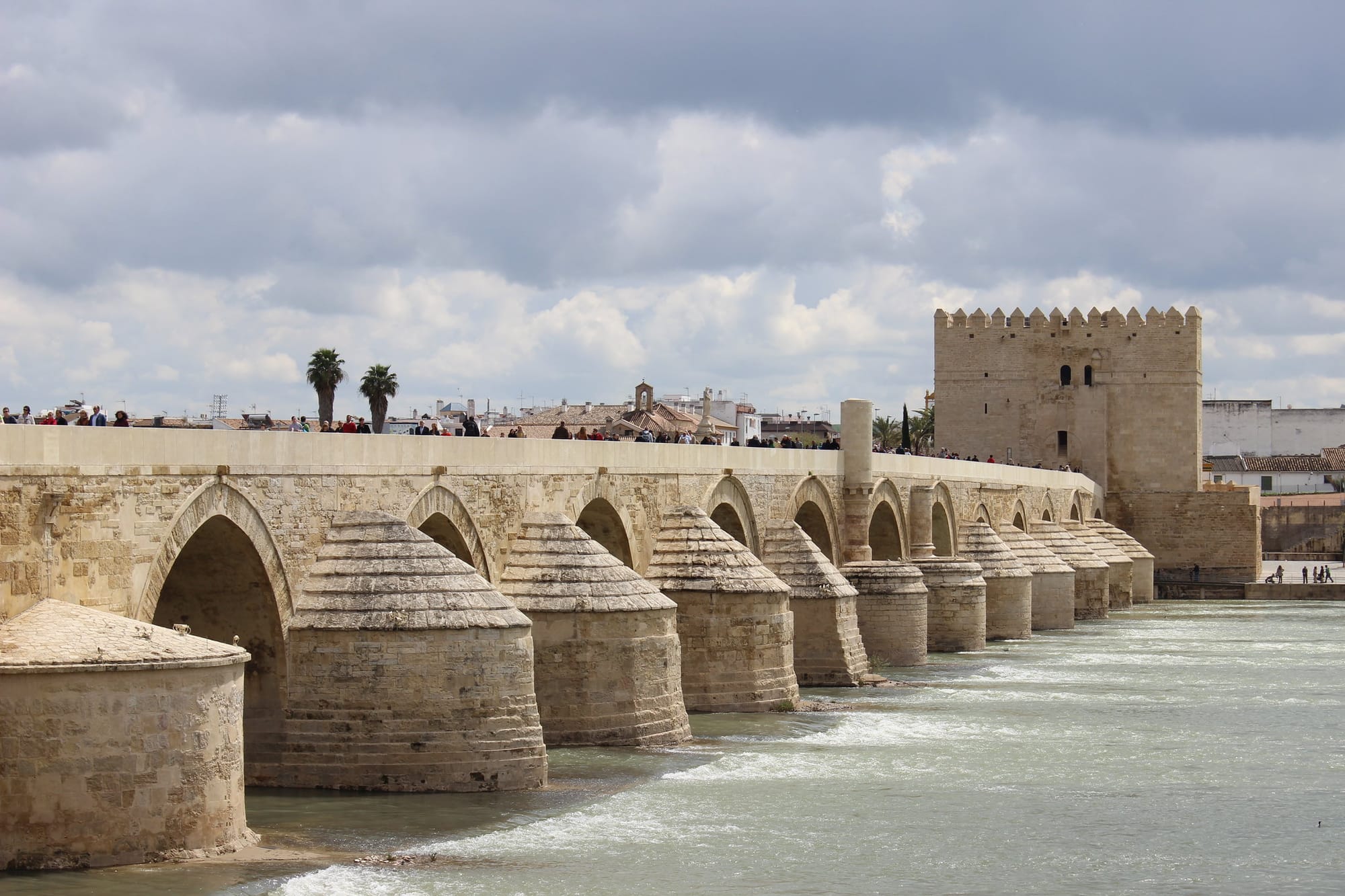
This raises important questions about how much of these ancient structures is still authentically Roman after 2,000 years of wear, use, and modifications.
Roman Bridge, in Cordoba Spain. Credits: sharghzadeh, CC BY-NC 2.0
Aqueducts and Roads: Bridging the Empire for Military and Civic Needs
Roman road bridges were mainly constructed –as already mentioned— by the government to support military movements and administrative needs, with trade as a secondary function, as most freight was transported by sea, rivers, and canals.
In contrast, aqueduct bridges were typically built by towns and cities, often under local patronage, while private bridge construction was rare, such as the unique Il Pondel bridge near Aosta, which dates back to 3 BC.
While earlier civilizations like the Assyrians and Greeks also built bridges, it was the Romans who established bridge construction as a vital aspect of civil engineering, essential for the efficient running of their empire and cities.
Roman bridges reflect key principles of their engineering, including the use of arches, concrete, and the focus on public infrastructure. Constructing these bridges, especially aqueducts, required precise surveying to ensure water channels maintained proper gradients, a more meticulous task compared to building road bridges.
The amount of surveying required for building a typical Roman road bridge is largely unknown. There are hints, such as surveyor marks found on the Narni Bridge, indicating that some measurements were taken, although it’s unclear whether they refer to distances between piers or route mileage.
Ancient texts like the Corpus Agrimensorum offer methods for measuring rivers, which may have informed bridge construction, but there is no direct evidence confirming their use.
Roman engineers likely placed more emphasis on assessing foundation stability rather than detailed surveying, as foundations were the weakest part of bridges. They sometimes avoided foundation problems by eliminating piers or constructing them above normal water levels.
Bridges over large rivers were often built during dry seasons to minimize the risk of floods. For military operations, temporary bridges like Julius Caesar’s Rhine bridge used pile-driven trestles, and wooden bridges were likely common, especially in northern Europe.
The process of pile driving, essential for creating sturdy foundations, involved labor-intensive work using barges and manual force to drive piles into the ground. Despite the challenges, Roman engineers achieved remarkable results through the application of sheer manpower and determination.
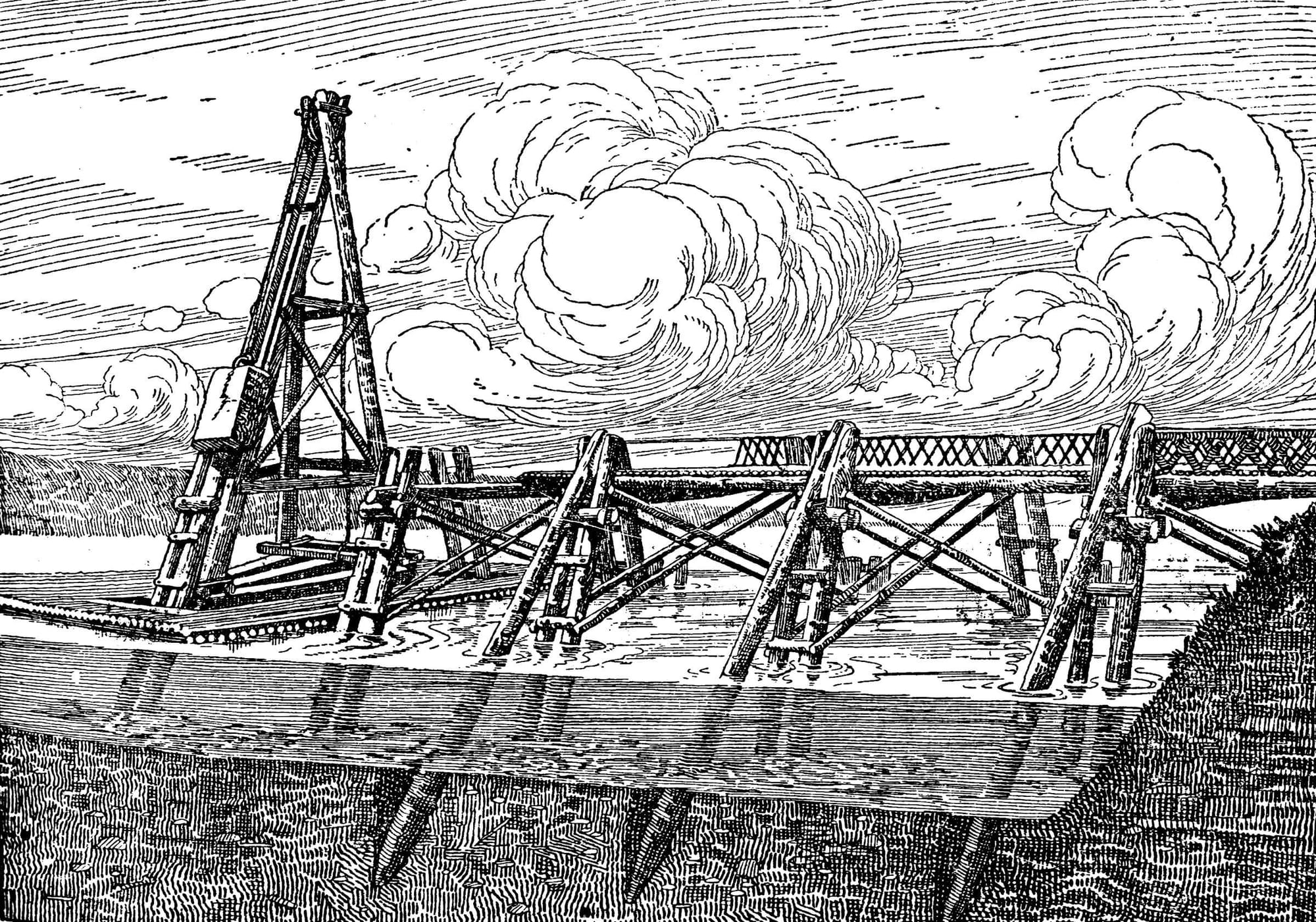
Maintenance and Erosion: How Roman Bridges Endured Through the Centuries
Roman cofferdams were created by driving piles tightly together, sometimes interlinked to enhance their stability or watertightness. At Trier, archaeological findings suggest the use of a double row of piles with clay packed between them to seal the cofferdam.
Simple machinery like chains of pots or bucket devices was likely used to keep the cofferdam dry, as more complex systems would have been too bulky for the confined space around the pier. Piles were often left around the completed piers to serve as “starlings,” providing protection, which needed regular maintenance over the centuries.
When bedrock wasn’t reachable, large piles—sometimes up to 8 meters (26 feet) long and 50 centimeters (20 inches) in diameter—were driven into the ground to serve as the foundation. Once in place, the piles were leveled off, and a grillage was laid to support the construction of the pier, a technique similar to medieval methods.
Roman bridge piers were generally constructed with an outer wall made of cut masonry, often reinforced with iron clamps set in lead. Some bridges were entirely made of cut masonry, while others used rubble concrete enclosed by the outer walls.
These methods provided strong support for the roadways, following principles that remained effective for centuries. However, these piers were often vulnerable to erosion and scouring due to weaknesses in underwater construction and poor hydraulic performance. Many bridges had upstream cut-waters to help manage water flow, but their flat downstream faces left them exposed to damage from river currents.
Some bridges featured protective platforms or aprons around the pier bases, covering parts of the riverbed to guard against erosion. These could be part of the original design, as at Piercebridge, or added later, as seen in Benevento and Cordoba.
In medieval times, weirs were built downstream of Roman bridges to create calmer water conditions, helping to protect the piers. Additionally, many of the cut-waters visible on Roman bridges today were added or modified after the Roman period, raising questions about how much of the original Roman construction remains.

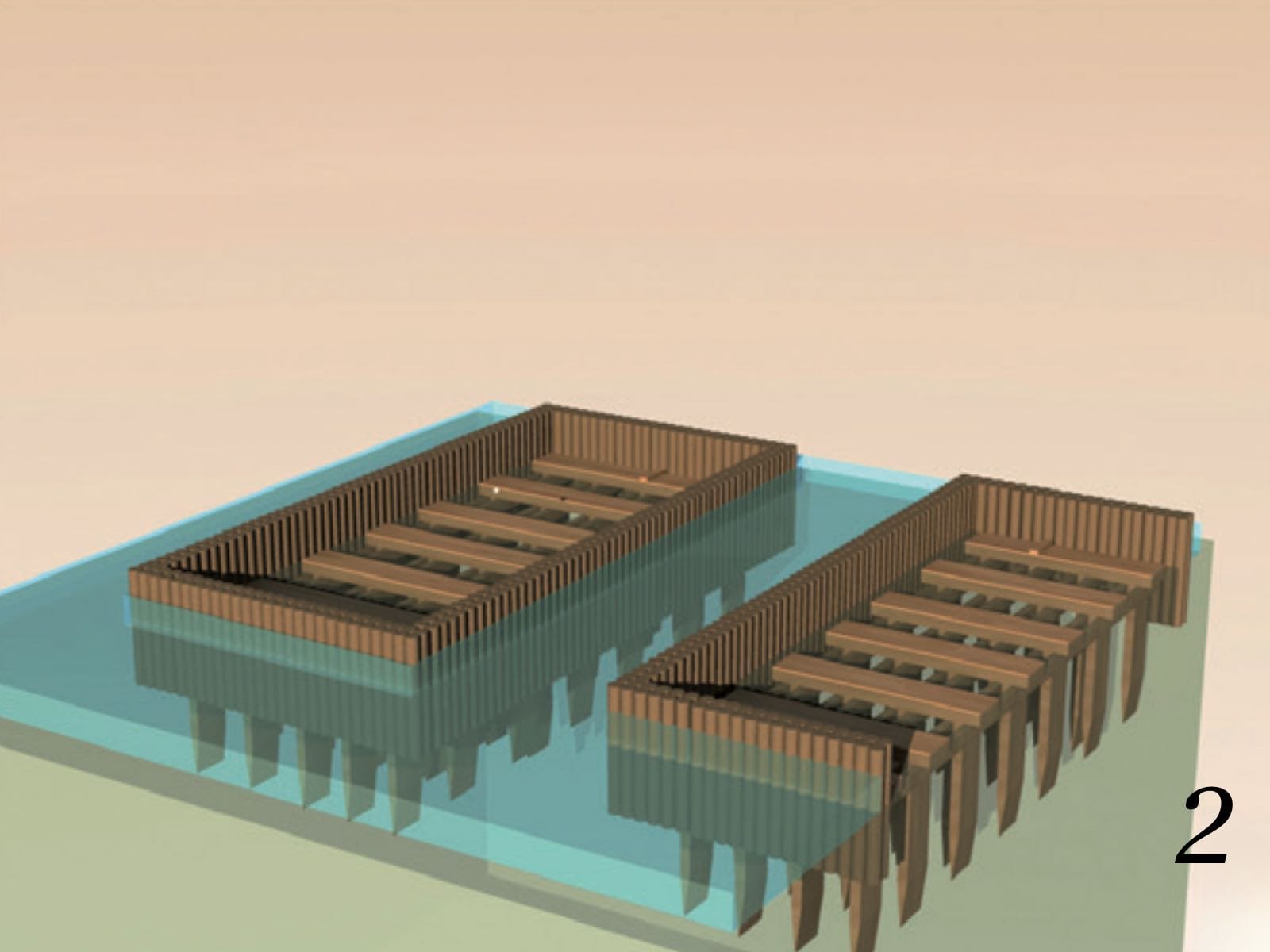

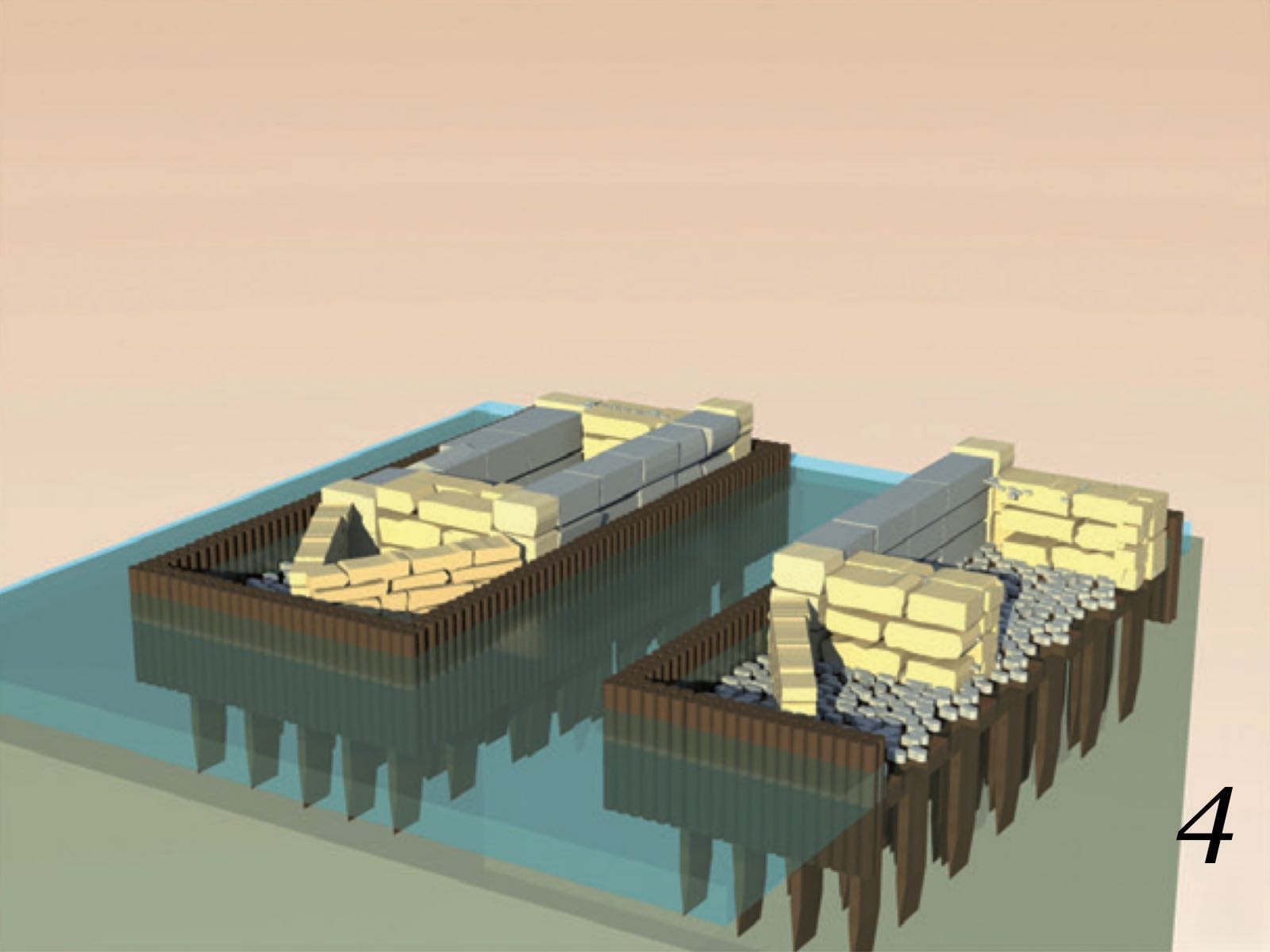
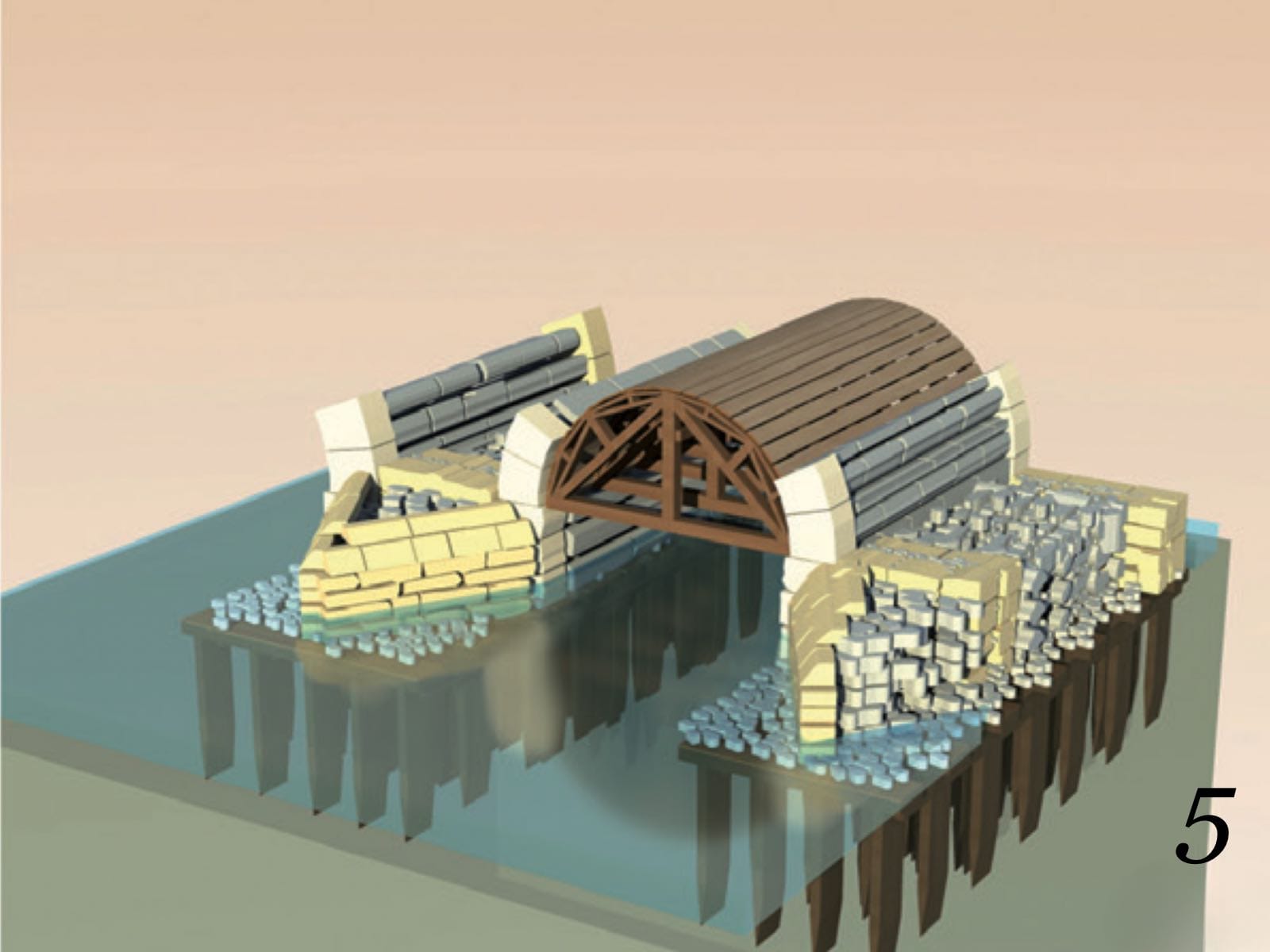
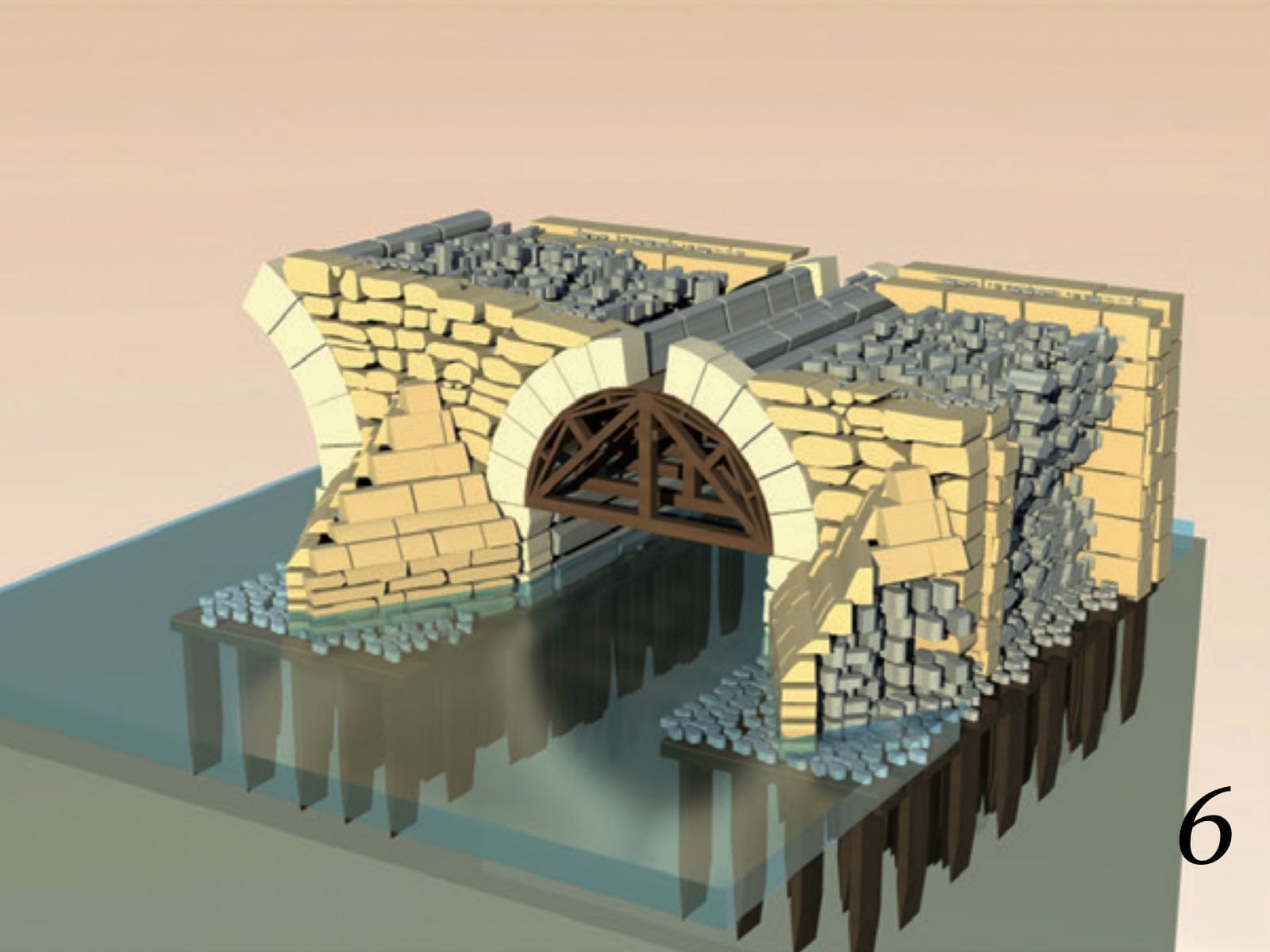
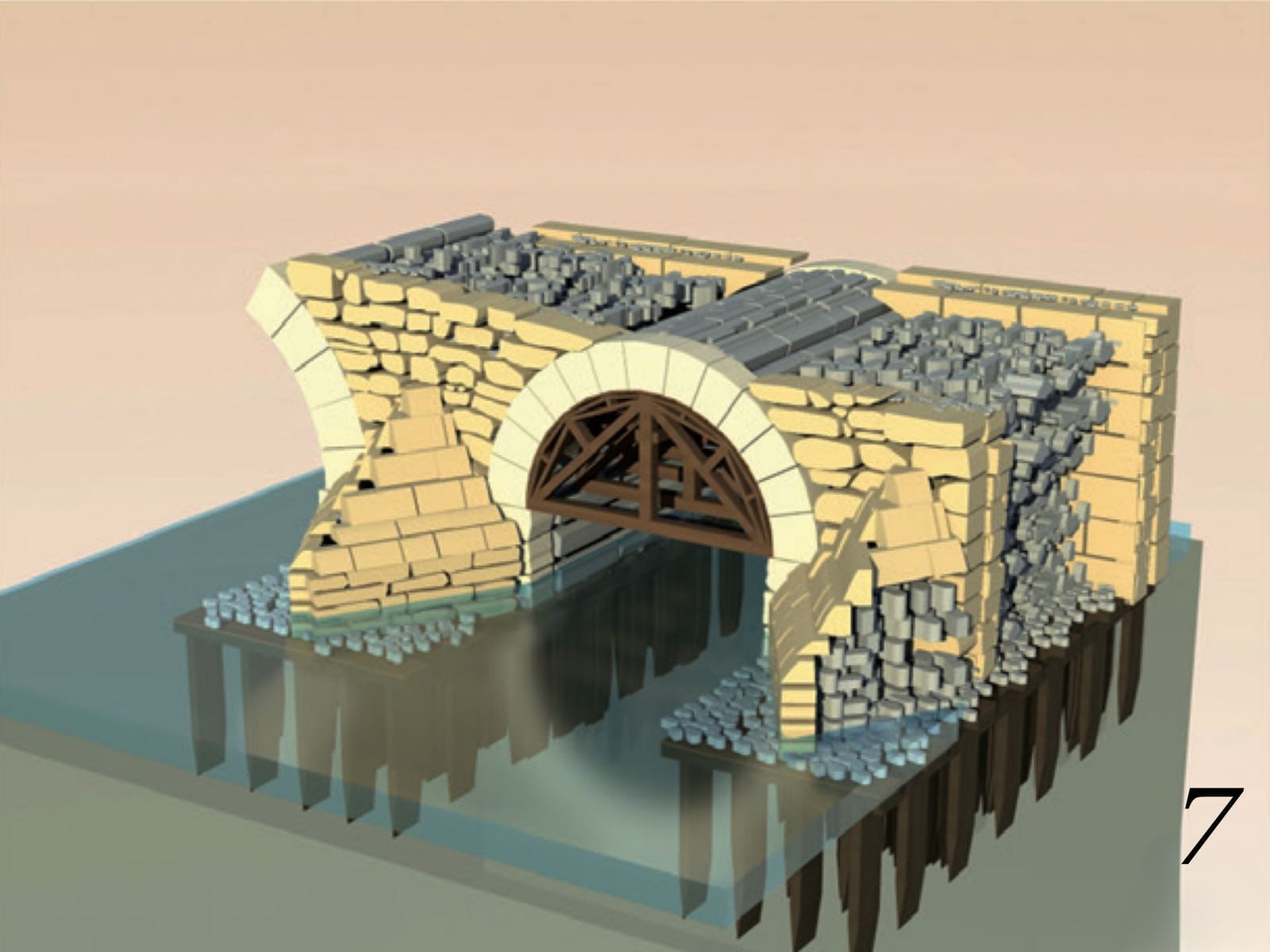
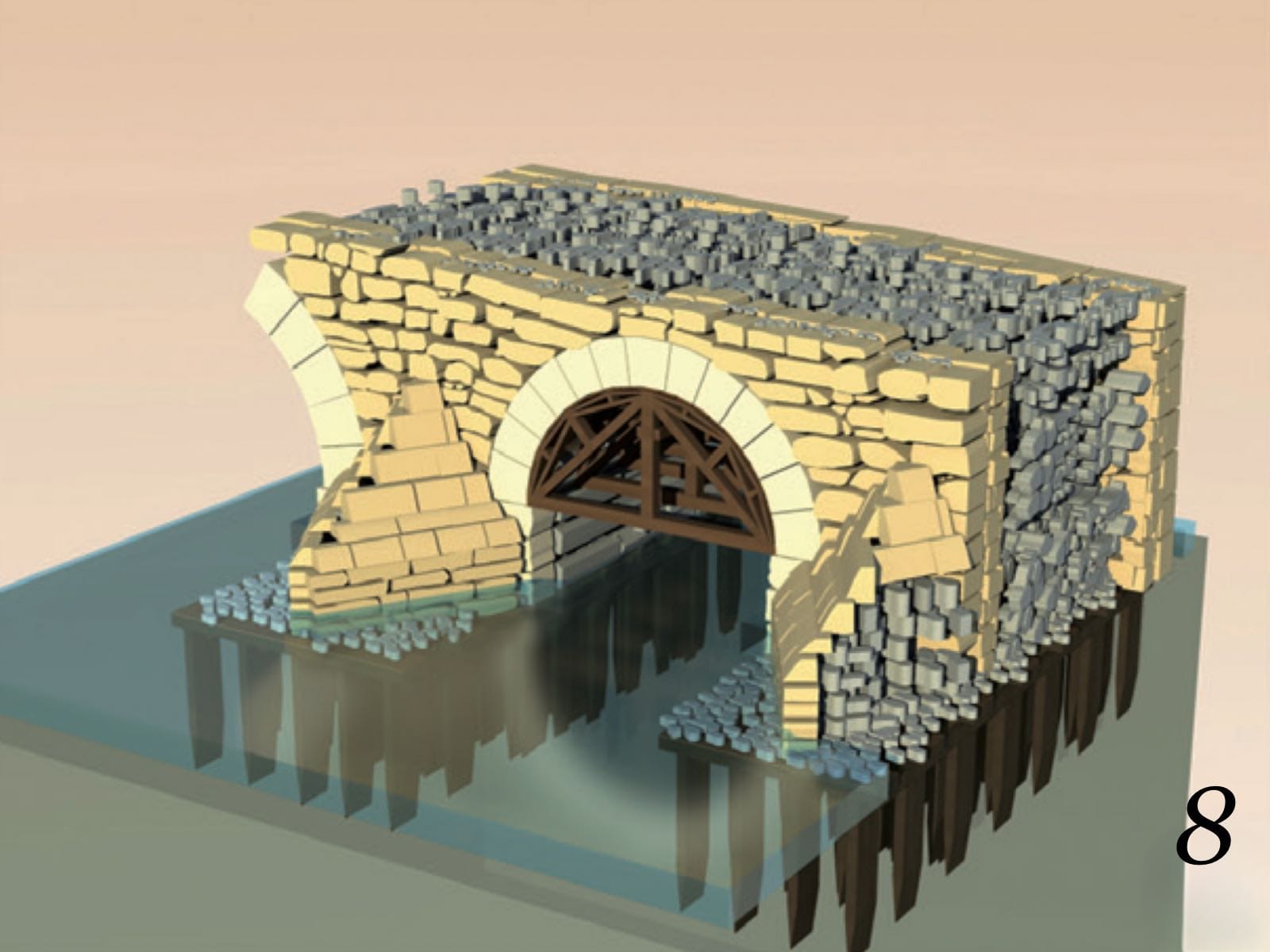
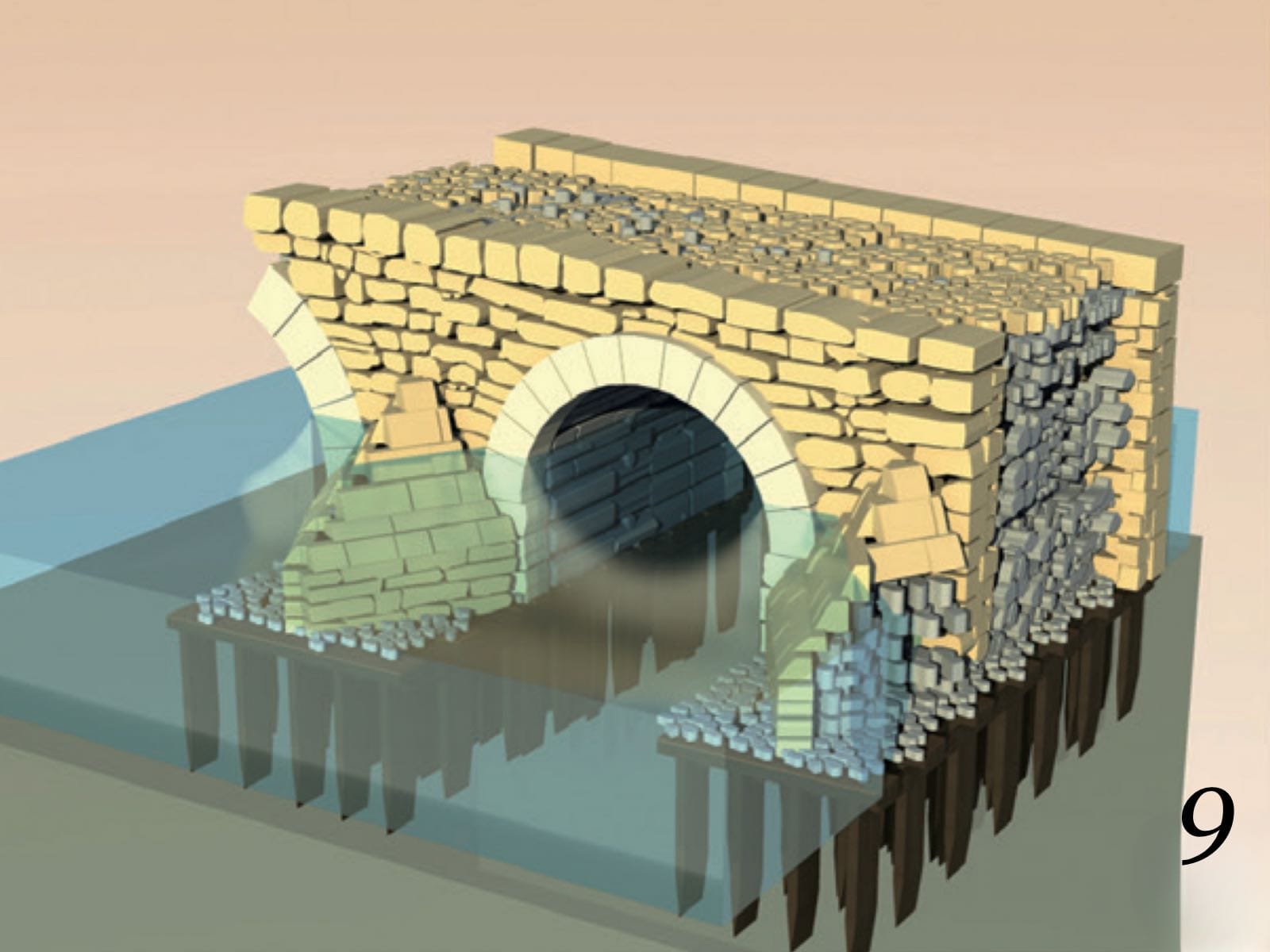
1. Construction of wooden cofferdams and emptying of water from the enclosed space
2. Construction of timber piled foundation system
3. Covering timber piles with rubble infill
4. Construction of outer facing shells of piers, abutments and breakwaters and inner filling shell of the piers, abutments and breakwaters
5. Removal of wooden cofferdams and construction of wooden centering
6. Construction of arches and vaults and completion of breakwaters
7. Placing of keystones of arch
8. Construction of inner and outer shells of the spandrel walls
9. Construction of parapet walls and paving of rubble stones
As aforementioned, the exact methods used to construct bridge arches in Roman times are not always well-documented, and the techniques likely varied.
However, many Roman road and aqueduct bridges still display remnants of the slots and protrusions that were used to support wooden scaffolding and falsework during the construction process, as well as for later maintenance or repairs. This scaffolding could span the full width of the bridge, supporting the entire arch during construction.
The voussoirs (the wedge-shaped stones forming the arch) could be made of masonry, sometimes reinforced with metal clamps, or brick and tile, with rubble concrete filling the area above. Some bridges, like the Pont du Gard, show evidence that the voussoir rings were constructed sequentially using the same centering device across the width of the bridge.
A similar method appears to have been used in the large span of the Ponte sul Lys at Pont-St-Martin, although distinguishing between Roman and medieval work can be difficult. The medieval Pont d’Avignon also shows signs of using this same construction technique. (The Roman bridge-builder: some aspects of his work, by NAF Smith)
The Roman Arch
In the 7th century B.C., the Tarquin kings of Rome brought in Etruscan engineers to address infrastructure challenges, such as sewage disposal, which led to the creation of the Cloaca Maxima, one of the oldest stone-arch structures. Shortly afterward, the first Roman stone-arch bridge, the Pons Solarus, was built, although it has since disappeared.
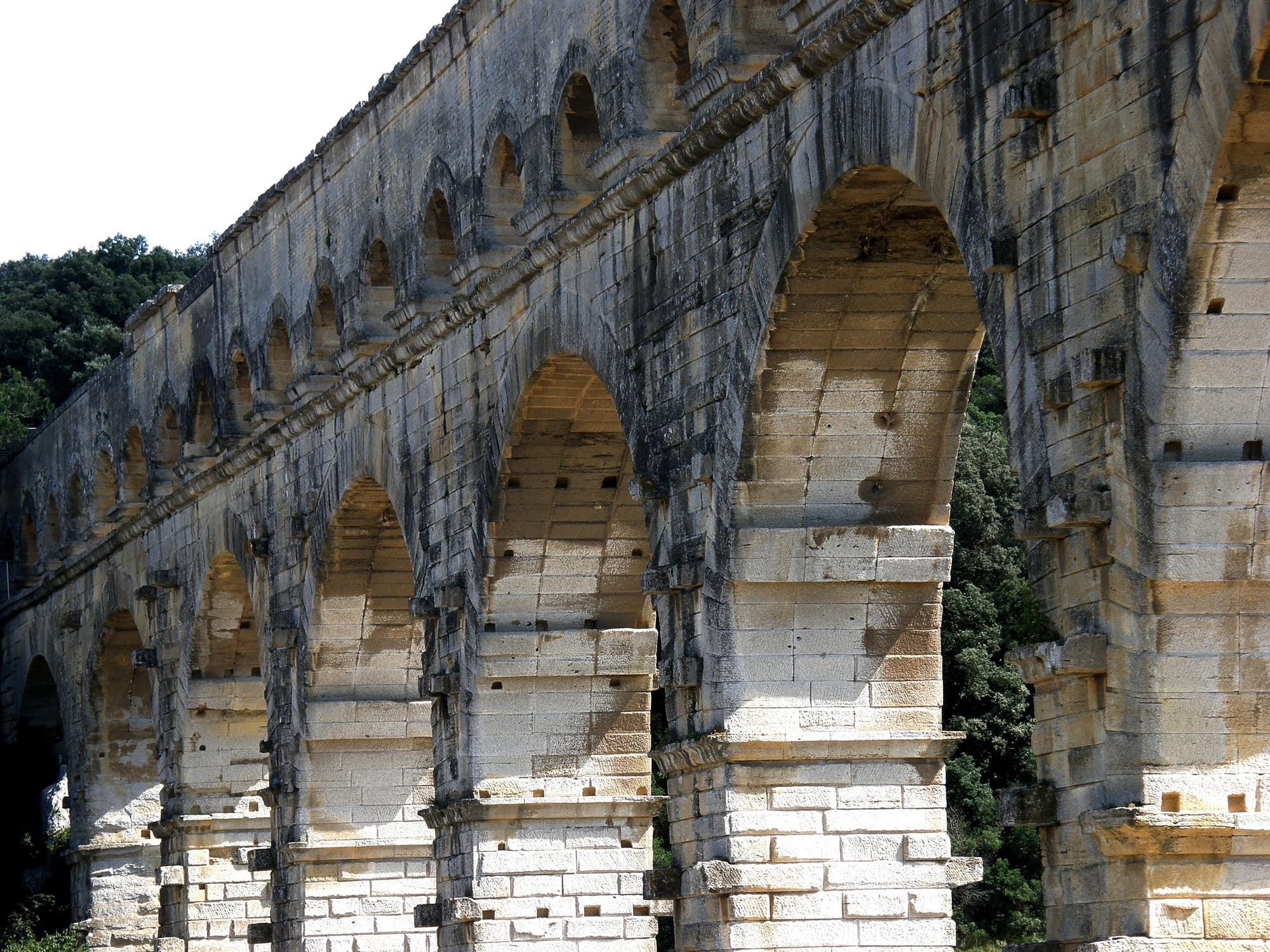
Roman engineers soon mastered the construction of durable bridges by sinking strong foundations to support large semi-circular arches.
Closeup of the Pont du Gard Arches. Credits: OliBac, CC BY 2.0
Bridging wide rivers posed significant difficulties, particularly with the piers, which had to withstand the water’s current and erosion. To support the heavy arches, the Romans built thick, sturdy piers, sometimes larger than necessary. Construction was done in phases, with each pier and arch built one at a time, often during dry seasons to avoid floods.
For underwater foundations, timber piles were driven into the riverbed using machines. In deeper waters, cofferdams were employed, where piles were driven in concentric circles, filled with clay to create a watertight barrier, allowing workers to dig and drive piles as deep as possible. These piles were then capped, and the stone foundations were constructed on top, using a special mortar called pozzolana for added durability.
To combat erosion, Romans developed cutwaters—pier extensions shaped like the prow of a ship—which helped reduce the impact of fast-moving water on both the upstream and downstream sides of the piers, preserving the structural integrity of their bridges over time.
The construction of Roman bridge piers involved driving piles into the riverbed, with the arches starting at the mean water level once spring floods had subsided. Temporary timber scaffolding, or falsework, was used to support the arch during construction. Wedge-shaped stones, known as voussoirs, were meticulously placed to form the arch, relying on precise stone-cutting rather than mortar. Despite their limited tools, Roman engineers achieved remarkable stability by arranging the stones in overlapping rows for added strength.
Although Roman bridges reflected the empire’s advanced engineering and resources, their design was limited by the use of semi-circular arches, which required thicker piers and irregular spacing between them. Early bridges, like the Pons Sublicius, were initially built from wood but were gradually replaced with stone.
While many Roman bridges deteriorated during the Middle Ages, some, like the Pons Fabricius, constructed in 62 B.C., have survived. This bridge, partially built with private funding, featured a famous statue of Hermes, leading to its modern name, Ponte Quattro Capi.
The Pons Cestius, built shortly afterward, showcased a novel construction technique that involved sinking rock and masonry to form a solid foundation for the piers, highlighting Roman innovation in bridge-building. These structures not only served practical needs but also had cultural importance, being adorned with statues and temples.
Roman Engineering Masterpieces Across the Empire: Examples of Endurance
The most extraordinary proof of Roman engineering brilliance is found far beyond Rome itself. Among the hundreds of stone-arch bridges and aqueducts they constructed across Europe, Africa, and western Asia, five structures in particular stand as enduring examples of the Roman Empire’s strength and innovation.
These include the Pons Augustus in Rimini, Trajan’s Bridge over the Danube, the Puente Alcántara and Segovian Aqueduct in Spain, and the Pont du Gard in southern France. Built during the first and second centuries, under the reigns of the Twelve Caesars and the Five Good Emperors, these masterpieces exemplify the empire’s grandeur.
After the time of Marcus Aurelius, Roman engineering declined, and following the empire’s fall, Europe lacked the ability to create such monumental structures. In many ways, these bridges better symbolize Rome’s power and civilization than the ruins of the Roman Forum. (Bridges and men, by Joseph Gies)
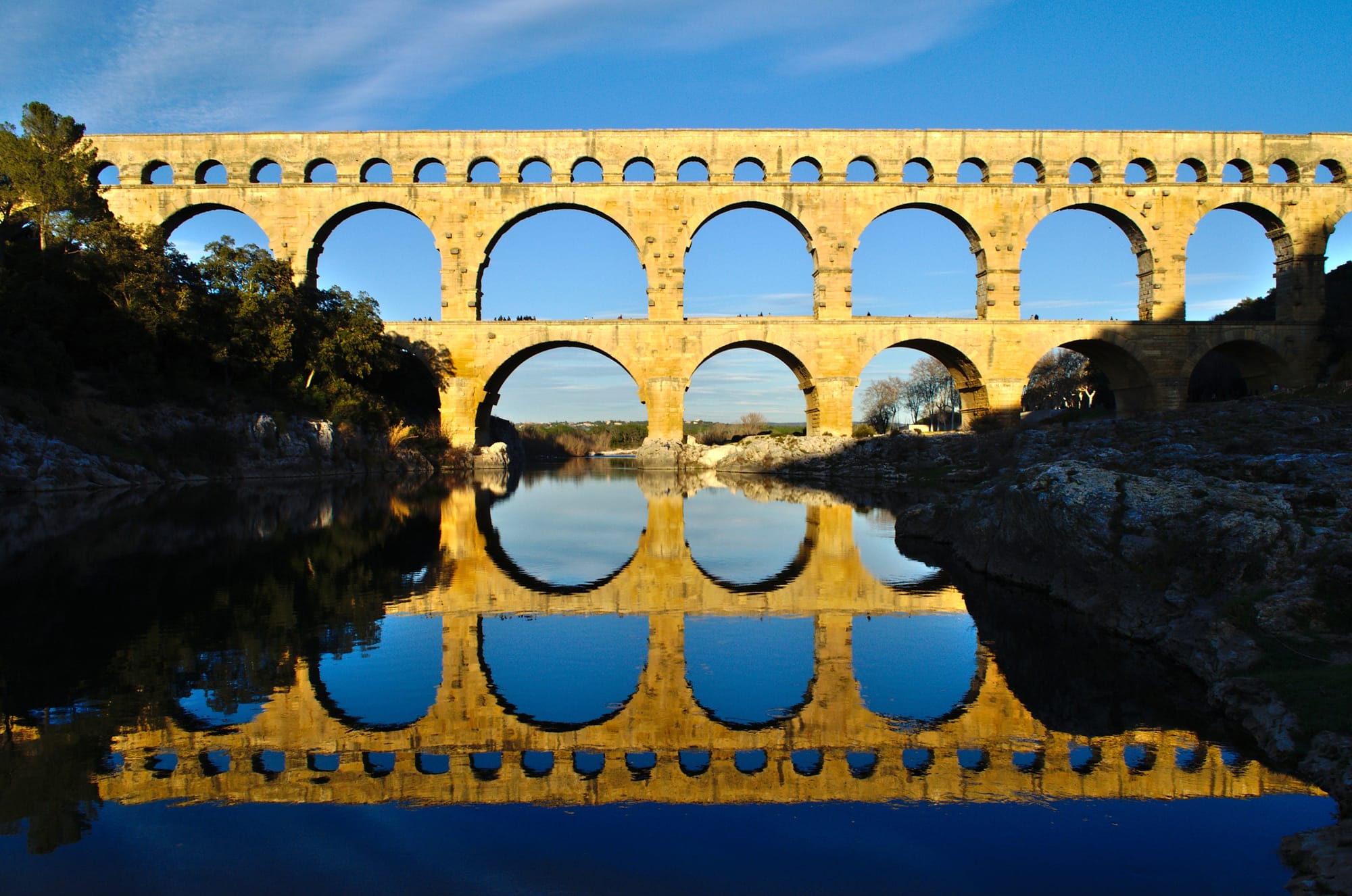
Roman Bridges you can still Cross Today
Sometimes miraculously, but most times through continuous restoration and improvements through the ages, Roman bridges can still be found standing, and are also still in use.
Today, you can traverse the Pont Julien, a well-preserved Roman bridge along the Via Domitia in southern France. Also in France, the Pont Flavian, once part of the Via Julia Augusta, remains mostly intact, as does the Pont du Gard, one of the most iconic Roman aqueducts.
Beyond France, the Alcántara Bridge in Spain and the Manfred Bridge in Germany are notable surviving Roman constructions. For those particularly fascinated by Roman engineering, the ruins of Trajan's Bridge in Romania—deliberately dismantled by his successor, Hadrian—are worth a visit.
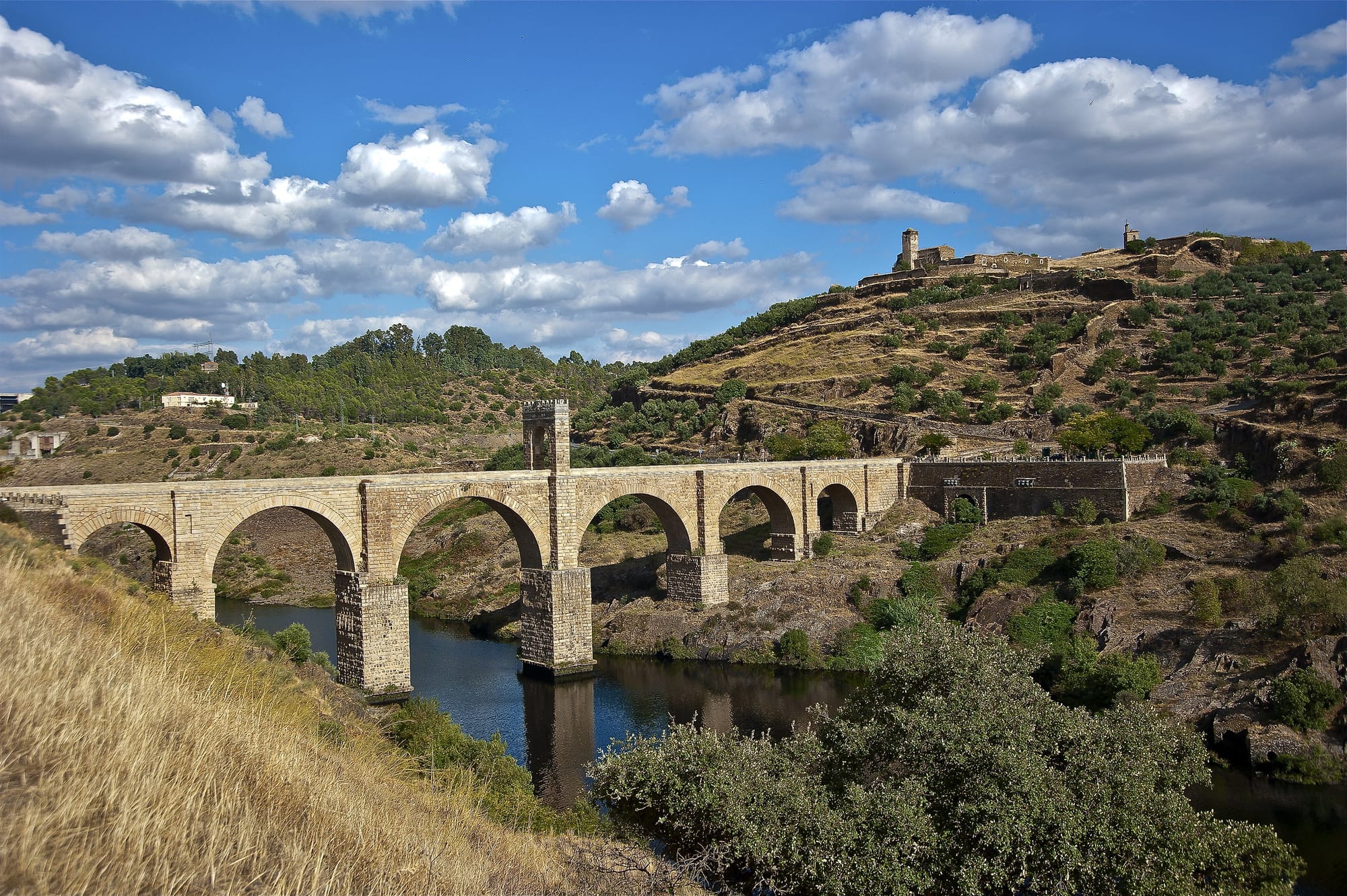
Dedicated explorers may also seek out remnants of the Via Maris, which connected Egypt to Syria, and the remains of the bridge at Caesar’s Dam in Iran. Notably in Rome itself, the Pons Fabricius, dating back to 62 BC, is the oldest surviving Roman bridge and remains in use today. It connects Tiber Island to the Campus Martius.
The Puente Romano in Mérida, Spain, built in the 1st century AD, spans the Guadiana River and remains functional for pedestrian use. Similarly, the Ponte Sant'Angelo in Rome, built by Emperor Hadrian in 134 AD, is another example of a Roman bridge still in use, though it now serves mainly as a pedestrian bridge.
Another notable example is the Ponte di Tiberio in Rimini, Italy, which was started by Augustus and completed by Tiberius around 20 AD. This bridge has been continuously used since its construction, and now supports modern road traffic, showing the true endurance, of the Roman Empire’s might.





About the Roman Empire Times
See all the latest news for the Roman Empire, ancient Roman historical facts, anecdotes from Roman Times and stories from the Empire at romanempiretimes.com. Contact our newsroom to report an update or send your story, photos and videos. Follow RET on Google News, Flipboard and subscribe here to our daily email.
Follow the Roman Empire Times on social media: